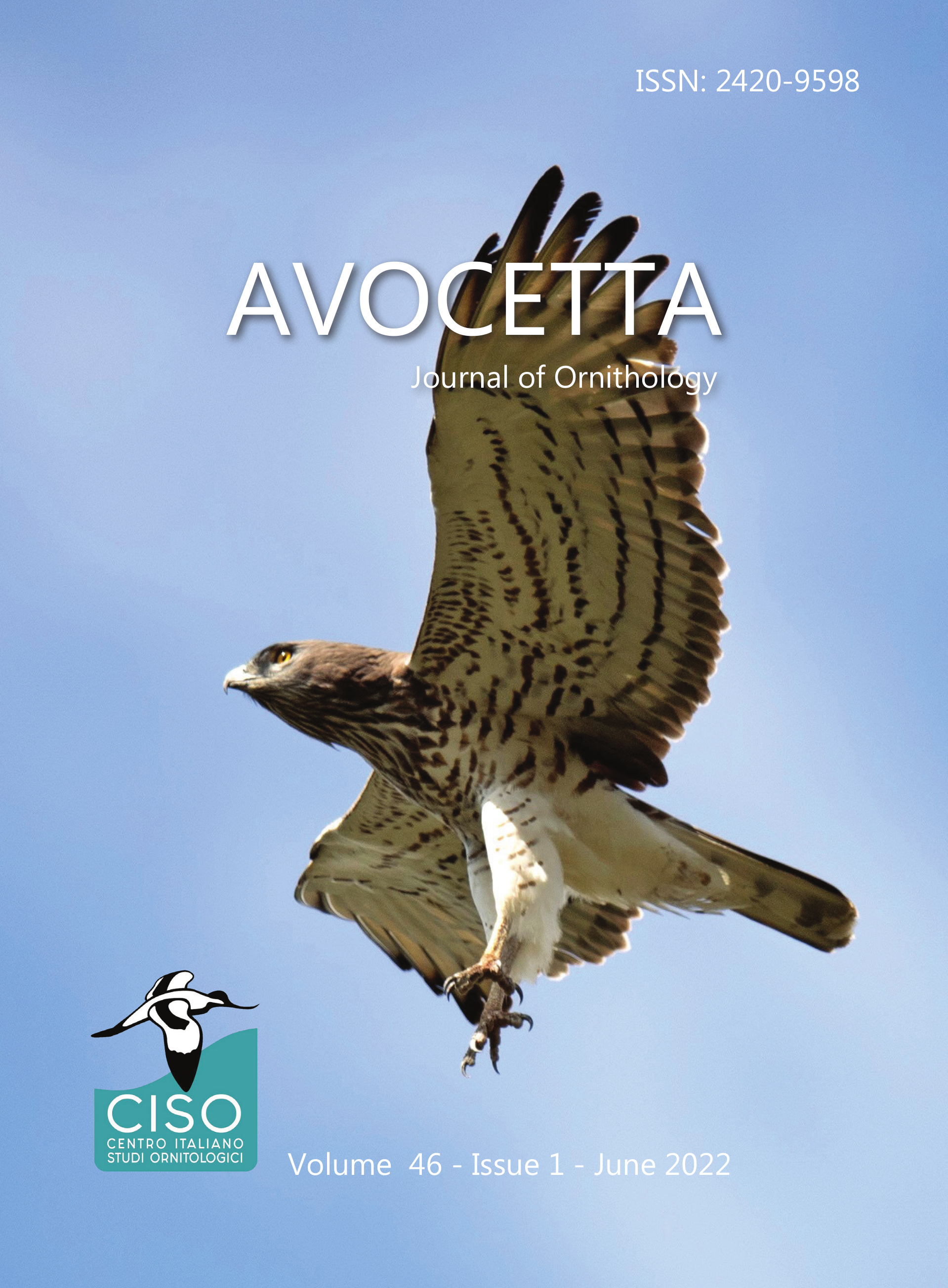
Volume 46 - N. 1
June 2022
Layout by Roberto Brembilla
Avocetta
Volume 46 - N. 1
Volume 46, Issue 1, June 2022 (Cover photo by Giorgio di Gennaro)
-
Editorial - Do ornithologists still play a role in reversing the crisis of farmland biodiversity?
Giacomo Assandri
-
Feeding habits of the Short-toed Eagle Circaetus gallicus during the breeding period in Central Italy
Federico Cauli, Matteo Riccardo Di Nicola, Paolo Audisio, Francesco Petretti & Francesco Paolo Faraone
-
Studies on the Rose-ringed Parakeet Psittacula krameri colony of Genoa (Liguria, NW Italy)
Valeria Gereschi, Loris Galli & Enrico Borgo
-
Short Communication - Unplanned restoration: Pallid swifts recover twenty years after rat removal from a Mediterranean island
Jean-Louis Martin, Jean-Claude Thibault
-
Short Communication - Age at first reproduction and longest-lived individuals in the Pallid Swift Apus pallidus
Giovanni Boano & Marco Cucco
-
Short Communication - European Roller thief nailed by DNA found in a bird carrier
Luisa Garofalo, Rita Fanelli, Annalisa Brucoli, Sebastian Cannarella, Rita Lorenzini
-
Short Communication - Evidence suggests an opportunistic entomophagous diet of the White Stork Ciconia ciconia in Sicily during breeding and post-breeding periods
Salvatore Surdo, Concetta Francesca Zapparrata, Renzo Ientile & Bruno Massa
-
Forum - Conservation Experiences, evidence and opinions - Italian zoos and birds: May them be a ‘missing link’ to improve public interest in birds?
Spartaco Gippoliti
-
Bird News - June 2022
Gaia Bazzi (ed.)
- Columns - Book Review

